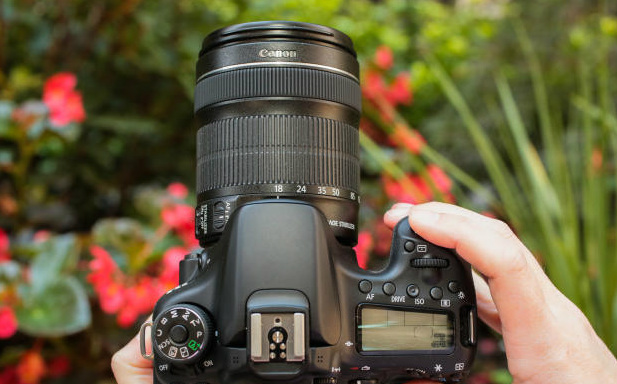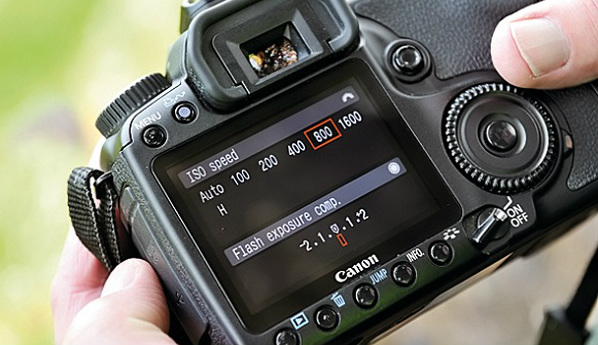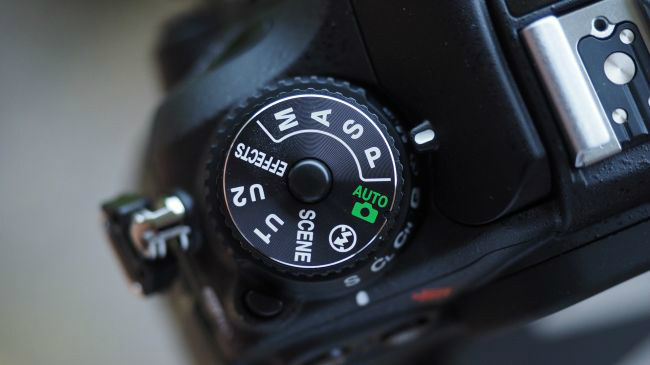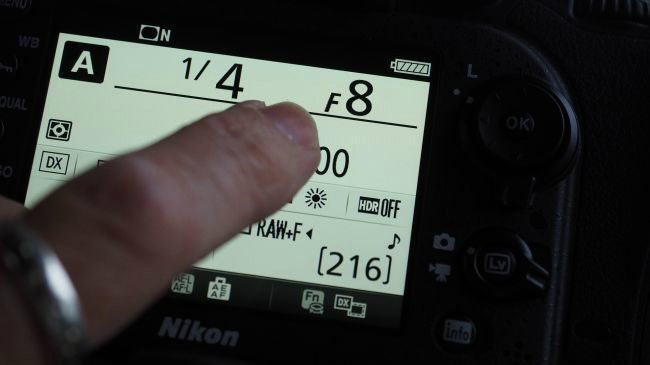Pocket basic terms in photography - P1
For those who have experience in taking photos, the article 10 photography techniques to have an impressive photo that we have introduced will help you quite a lot in the process of artistic creation. So for those new to the camera, what knowledge is needed for us? The network administrator introduces you to the terminology commonly used in photography, so that you can understand common knowledge and easily in the process of undertaking the snapshot.
1. A
AE (A / Av, S / Tv, P) - Automatic exposure
Abbreviated from Auto Exposure - meaning automatic exposure - the camera automatically sets the lens aperture and shutter speed operation.
AE Lock - Automatic exposure lock
Short for Auto Exposure Lock. When shooting in aperture priority mode (A / Av), speed priority (S / Tv) or fully automatic P (Program), the lens aperture and shutter speed will change change when the camera automatically detects light sources in the surrounding environment and can change settings automatically. With AE Lock feature, the photographer locks the lens aperture and shutter speed fixed when the camera is set to metering, so changing the lighting context of the photographer shifts the camera angle or recompose the frame image, the exposure parameters do not change automatically. When you lightly press the shutter button (half of the trigger) and hold it still, or press the AE Lock button, metering mode is activated and the exposure settings will be locked at the focus point.
AF - Auto focus
Short for Auto Focus. The camera will focus on the subject automatically without you having to rotate the focus ring on the lens manually.
AF Lock - Auto focus lock
Short for Auto Focus Lock. In auto mode, after the person takes the focus by lightly pressing the shutter button (half of the trigger) or pressing the AF Lock button, the focus mode is activated and locked in the subject. If the camera has shifted or the photographer recompiles the frame, the focus point remains unchanged.
AI Servo AF / AF-C - Continuous autofocus mode
The camera will use the continuous autofocus mode of moving subjects instead of one-time autofocus. This mode anticipates the next movement of the subject and focuses on the object as soon as the object moves. Suitable for moving, sports shooting scenes .

Angle of View - View angle
Viewing angles are the width of a scene that the camera records into an image. The viewing angle varies depending on the focal length of the lens, which is estimated in mm. Wide-angle lens (wide) has a wide viewing angle and, conversely, the long focal length lens (tele) has a narrower viewing angle.
Aperture & Aperture Value - Aperture & Priority aperture
Aperture is the aperture of the lens that allows light to pass through the lens before entering the camera.
Aperture priority is the mode in which the photographer actively changes the large or small opening to control the amount of light passing through the lens. The aperture is denoted by "f", expressed in written form such as: f / 1.2, f / 1.4, f / 2, f / 2.8, f / 4, f / 5.6 . Aperture priority mode This aims to control the depth of field of the image, also known as the clear image range in the picture frame (DOF).
2. B
Backlight - Backlight
A light source from behind the subject facing the lens. In contrast to creating high contrast, create a shadow directly with the lens. This is a bright direction that is difficult to use but is a bright direction that impresses strongly and easily creates feelings for viewers, if the person can control it.
Blur - Blur
Only image areas are outside the focus point or outside the focal plane. The area of the image in the focal plane will be sharp, outside the focal plane will be blurry. The photographer can highlight the subject by blurring the foreground / background.
Blurred shot - Blurred photos
The situation of a photo of a moving subject, or a camera shake, makes the subject to be blurry. There are also cases where the photographer deliberately blurs the object to create a moving effect, the rest of this situation normally makes the photo not perform well.
Bounce flash - Breaking lights
When the flash is used, the light is directed to the wall, the white ceiling or some bright white plane aims to reflect light against the subject. In this way, light bounces back to disperse the light more broadly, creating a soft effect to reduce the sharp and glossy contrast. But note that the intensity of light will decrease when reaching the object, so it is necessary to calculate in advance to use it effectively.
Bulb - B exposure mode on the camera
It is a mode that allows active shutter exposure in a time of discretion. When selecting this mode, press the shutter button, the shutter will open continuously during the time the person is shooting. Keep the shutter button pressed down, and the shutter will close when the shutter button is released.

3. C
Camera shake - Camera shake
The camera is not held in place when the shutter button is pressed, because the hand shakes or the photographer has a shift while the camera shutter is open making the image blurry. This situation usually occurs when the shutter speed is too slow, or the subject moves too fast or using a long focus lens (telephoto) where the camera is not fixed.
Center Weighted metering - Center metering
Is one of the metering modes of the camera. Central metering is used to measure brightness in the center of the frame.
CF card - Memory Card Compact - Flash
A type of card commonly used for DSLR cameras.
Color saturation - Color saturation
It is an indication of the intensity or vividness of the color of the image.
Color temperature - Color temperature
The color temperature scale in photography is measured in Kelvin units (abbreviated as K, or read as K temperature). This is the unit of measurement of the color temperature of light reflected from the subject being photographed and reproduced into the image in the camera. Temperature scales are often expressed from warm tones to cool tones.
Color tone - Color tone
A word used to indicate the color temperature of the image, such as yellow tones, red felt, cool / warm tones .
Contrast - Contrast
Often used to indicate the color difference between bright and dark areas in a frame. When speaking high-contrast images, the image has a sudden, sharp change between the two areas with light and dark tones. If you say the image has a low contrast, it means that the change (gradation) between the two areas of the image is bright and dark, not suddenly, soft, more comfortable.
Correct exposure - Correct exposure
It indicates the combination of aperture and shutter speed of the shutter, giving the brightness and color in the right image, right (as intended by the photographer). The exposure value is the appropriate amount of light recorded and recreated by the sensor. In case of improper and inappropriate, the photographer will increase or decrease the amount of light to compensate.

4. D
Depth of field - Depth of field
A clear image area, the distance between the front and back of the focus point. The depth of field is directly affected when changing the aperture of the lens. The smaller the lens aperture (the greater the f-index), the thicker the depth of field, whereas the larger the aperture (the smaller the f-number), the thinner the depth of field. The depth of field is also affected by the lens focal length and the distance from the position of the camera to the subject. The narrower the depth of field (thin DOF) when the lens focal length is longer or the distance from the position of the machine and the object is closer.
Depth of field preview - Preview depth of field
Is the function when pressing the DOF Preview button on a DSLR camera. When pressing the depth-of-field preview button, the photographer can see the DOF through the camera's viewfinder before pressing the shutter button, aiming to better capture the clear range of images they want, before deciding intended to shoot.
DPI
The number of pixels per inch (dots per inch). DPI units are used to determine the resolution when printing images, ie, determine the pixel density per inch equivalent to 2.54 cm of the image. And on the camera, the DPI unit indicates the number of pixels that the printer can print on each print.
5. E
Evaluative metering - General metering
As one of the metering modes of the camera relative to the entire frame of the image in many viewfinder areas. Metering mode determines the appropriate exposure value that the camera recommends based on the position of the subject in a certain light context when shooting.
Exif - Information data of digital photos
Short for Exchangeable Image File format. It is data information of digital photos that includes all the parameters when taking photos. For example, the lens aperture, shutter speed, white balance, light sensitivity, flash usage, the image was edited post-production with any software . This information data is written to photos when shooting. This data can be viewed directly on the camera (info) or with a photo browsing application on the computer.
Exposure - Exposure
The amount of light received by a light sensor based on the determination of the lens aperture parameter, shutter speed and ISO speed is another factor affecting the exposure. A photograph that is supposed to be a good exposure is the result of a harmonious combination of the three elements and the image is reproduced in color and natural brightness as seen with the eyes. The picture is so bright that people call it ample, too dark.
Exposure compensation - Clear compensation
This is the technical manipulation of the person shooting on the camera to get the correct (degree) exposure shown by the light meter in the viewfinder. Use this exposure compensation technique to make a region look brighter or darker. On the camera there is a + -EV adjustment button to perform this exposure compensation operation.
Eyeglasses-Eyepiece
Is a small lens in the viewfinder so that the photographer can see the scene to capture. Often on the viewfinder, there is a small wheel for you to adjust the refraction to match the eye of the photographer, or to call the telescope.

6. F
File
The image index is stored, a digital photo is an image file and the amount of data stored is called the size of the image file.
Fill flash - Cover the lamp
Is a technique often used to take portraits outdoors in the context of contrast or strong light difference. The sun is behind the subject directly into the lens, the background is bright while the subject faces the dark lens. In this case, metering is suitable for the bright background and then use the flash to cover the subject, so that the face is lit properly and at the right time.
Film Camera - Camera using film
Fine / Normal - Good / Normal
The word used in the camera refers to the quality of the image that the camera owner pre-installs. Of course, the Fine level gives better quality images than Normal.
Flare - Flaring
As a phenomenon of light shining directly on the lens, those unwanted rays create a reflection of the direction of the lens inside the lens, affecting the reflected rays from the object being disturbed. , creating a phenomenon of bright, fading, like a layer of mist covering the image. The hood is a way to reduce this phenomenon, obscuring the rays of light that enter the lens.
Flash - Flash
An artificial light source to light almost daylight when taking photos.
Focal length - Focal length
The index indicates the narrow width of the scene taken in millimeters on the lens. Focal length is the distance from the center of the lens to the image sensor surface. Usually, people rely on focal lengths to distinguish wide-angle lenses and narrow-angle telephoto lenses.
Focus - Focus
Focus is the most obvious point when the camera focuses.
Framing - Create photo frames
Manipulate the composition of the composition when watching the scene through the viewfinder. Creating a photo frame is to create the structure of the main / secondary components in the image, with a suitable layout, highlighting the subject to capture. Learning photo composition is to learn how to create photo frames.
Front light - Direct light
The light source in front of the subject is taken, which is behind the person holding the projector into the subject. Often referred to as a bright shot.
The terms in most are in English, so it is quite difficult. Try to remember to have more knowledge for yourself. We will continue to update the introduction to Part 2.
Refer to the following article:
- 17 tips that any graphic designer must know
- 10 things to learn in 10 minutes helps increase your productivity
- All things about Jack Ma - Billionaire admires the whole world
Good luck!
 Pocket basic terms in photography - P2
Pocket basic terms in photography - P2 The terms need to know in SEO
The terms need to know in SEO 18 basic terms to know when buying a new TV
18 basic terms to know when buying a new TV How to secure data for Pocket PC?
How to secure data for Pocket PC? 5 types of photos ideal for those who like to travel
5 types of photos ideal for those who like to travel